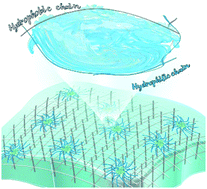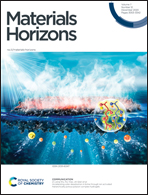Superior water anchoring hydrogel validated by colorimetric sensing†
Abstract
The exploration of water-retention hydrogels is of great significance for electronics, tissue engineering, biomedical devices, and various fields that rely on hydrogels as platforms. However, the development of efficient water retention hydrogels still encounters severe challenges despite a series of proposed design principles. Here, we try to explore moisturizing hydrogels and evaluate the water retention capability from the perspective of color signal conservation considering its visualization feature. An interpenetrating hydrogel with an alternating hydrophilic and hydrophobic structure constructed by micelles and rigid chains was proposed from the perspective of manipulating the water state through chain state and inter-segment interaction forces brought by the hydrogel network. Due to the efficient reduction of the kinetic activation energy brought by the strong bonding of water molecules to the hydrophilic polymer chain and the repelling effect of water molecules to the wrinkled corners by the hydrophobic chain, remarkable water anchoring ability was achieved. The proposed water retention strategy was evidenced by the remarkably restricted color diffusion of dye particles and the reaction product resulting from the specific probe molecules with urea particles. We expect that the present water anchoring design strategy would open up a brand-new methodology for the exploration of high-performance moisturizing hydrogels and efficient colorimetric hydrogel devices.



 Please wait while we load your content...
Please wait while we load your content...